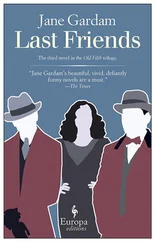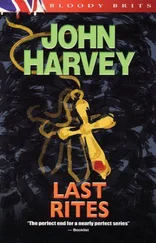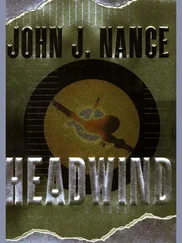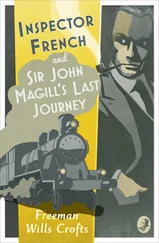“Yes. Got it.” Dan began punching in an abbreviated narrative of what had just happened to transmit to Pangia’s command center in Chicago.
“As soon as you’re done with that, Dan, ask Shanwick for higher. I’m tired of this cirrus,” Jerry said.
“Will do.”
Dan typed in both messages and triggered the send function as Jerry scanned every panel for a clue to what had happened. The captain could see the copilot leaning forward again, scrutinizing something on the screen controlling the radio systems and the Aircraft Communications Addressing and Reporting System, known as ACARS.
“What?” Jerry asked.
“It’s not going through,” Dan replied. “I’ve got no indication of a transmission.”
“Maybe it’s just not reporting properly. You think?”
“I don’t know what to think, Jerry. Hold on, let me try getting Shanwick with a CPDLC message,” he said, referring to the Controller-Pilot Data Link Communication system. His fingers moved over the appropriate virtual buttons on the computer screen to send a message directly by satellite to Shanwick, then tried the HF channel, but the call went unanswered, as did the next attempt to reach the company over the satellite phone.
Jerry watched him work with increasing concern as the copilot went through the entire array of available communication devices controlled through the touch screens, until Dan looked up and met his gaze.
“Nothing, Jerry. We’ve got nothing!”
“You tried VHF?”
“Yes, 123.5. No one’s answering, and there have to be aircraft all around us.”
“Okay, there’s got to be a way to reset these radios.”
“There is a procedure to reset the satellite phone, but it stands to reason, Jerry. Whatever blacked us out up here probably tripped a whole bunch of breakers in the E and E compartment.”
Jerry handed over the checklist. “You know how to go down there?”
“I’ve only been in the compartment once, but… yeah, I know how.”
“We’re supposed to get company approval first.”
“Okay, so once we reset the radios, I’ll ask them for the okay,” Dan chuckled.
“Good plan.”
Dan was lifting himself out of the seat but Jerry reached out to stop him. “How much time before we hit the coast, Dan?”
“Three hours, twenty minutes to Newfoundland,” Dan replied. “And we’ve got five hours to JFK with six hours thirty minutes fuel remaining.”
“Okay.”
“At least the computers are with us again. I just don’t understand what the hell happened back there.”
“Tell me about it,” the captain replied, his eyes on some distant point beyond the nose. “This is a frickin’ electric jet. I don’t know how it’s even possible!”
Shanwick Air Traffic Control Facility, Shannon, Ireland (9:15 p.m. local / 2115 Zulu)
“Pangia One Zero, Shannon on HF. Are you experiencing any difficulty, sir?”
Arthur O’ Brien had triggered the selective call code for the flight he’d been watching on their new extended radar, speaking on high frequency radio. There was no guarantee the crew of Pangia 10 would hear him, but they hadn’t responded to his satellite computer message and this was getting serious.
Arthur leaned in slightly as he studied the computer-generated displays of the air traffic under his control, most of them entering, leaving, or navigating the Nat Tracks–the North Atlantic Track System. He was dead tired, but his focus had snapped to the glowing symbol representing a Pangia Airways jumbo jet after it had made a completely unexpected U-turn at 38,000 feet.
He could feel his fatigue evaporating.
“Pangia One Zero, how do you hear Shannon Centre?” he repeated, his finger moving imperceptibly against the transmit switch.
Even in the subdued atmosphere of the radar room, the uptick in his voice had caught the attention of his shift supervisor, and Sean Smythe was beside him, glancing with rising concern at O’Brien’s display. The Tel Aviv-to-New York flight was boring eastbound, the huge Airbus A330 now challenging a sky full of westbound jetliners approaching their North Atlantic Track System entry points, including two 747s closing on their position at the same altitude.
“Bloody hell!” O’Brien muttered, his voice low and steady, his mind on full alert .
“He’s not talking to me, and he hasn’t responded to the CPDLC message, and I only caught this when he crawled back on to my scope.” O’Brien said to Smythe without looking up. He mashed the transmit button again, hard enough this time to feel his finger protest. “Pangia One Zero, Shannon, how do you hear us? We see you’ve made an unauthorized course reversal.”
O’Brien finally glanced up at his chief, and Smythe read the grave expression on the controller’s face. He had worked with Arthur O’Brien for a decade and had never seen him rattled, and while this was no exception, the rising tide of tension was washing over him as well.
“Better clear the way,” Smythe said, voicing O’Brien’s thoughts.
“Got it,” Arthur answered, his finger already triggering the transmitter as his mind shifted to the high-speed task of keeping a sky full of jetliners from colliding with the rogue Airbus. All of those westbound flights were closing in on their entry points to the North Atlantic Track System, after which they would be out of direct radio contact, passing position reports primarily through satellite-based computer messages. But for now he had to rearrange those jets approaching the coast, and it would all be done with numbers: compass headings, fired by voice into the headsets of a dozen airline pilots, shattering what had been a quiet, routine passage over western Ireland.
Turning a British Air 747 to a heading that wouldn’t conflict with the Pangia Airbus was his first urgent task. Using the traditional radio call sign of all British Air flights the order rolled easily off his tongue.
“Speedbird Two Three, turn immediately to vector heading three-zero-zero, acknowledge.”
The obviously puzzled voice of a pilot with an exceptionally cultured accent replied from the British Air cockpit. “Vector heading three-zero-zero, Speedbird Two Three, Roger.”
Very well… the Air France flight next, then Virgin Atlantic, then American.
The British Air pilot interrupted before Arthur could trigger the next command.
“Shannon, Speedbird Two Three. Have we lost our Nat Track clearance then?”
“For the moment, yes, Speedbird. Remain this frequency and standby.” The pace of his words was accelerating, the same motormouth tendency he had always complained about in other controllers who tried to stuff too many words down the finite “tube” of a push-to-talk radio in any given period of time. But there was no time to hesitate. Three oncoming flights had to be turned away quickly and in the form of a messy starburst maneuver there would be no time to explain.
“Air France Two Eighteen, Shannon. Turn right immediately, vector heading three-zero-five. Break, Virgin Four Four Six, immediate right turn, vector heading three-one-zero. Break, American Twelve, immediate right turn, vector heading three-two-zero.”
A cascade of acknowledgments flowed through his headset from each flight, each voice registering tension as the collective group of airmen perceived the alarm and urgency in their controller’s inflections. O’Brien saw the respective blips beginning to change course just as the voice of the British Air pilot cut through his consciousness again with a chilling message.
“Shannon, Speedbird Two Three. We’re responding to a resolution alert.”
Dammit! Arthur thought to himself. The TCAS—the onboard traffic collision avoidance system—in the British Air 747 had electronically detected the oncoming Pangia Airbus A330 and was now commanding the pilots to make an emergency climb or descent to avoid a collision.
Читать дальше












